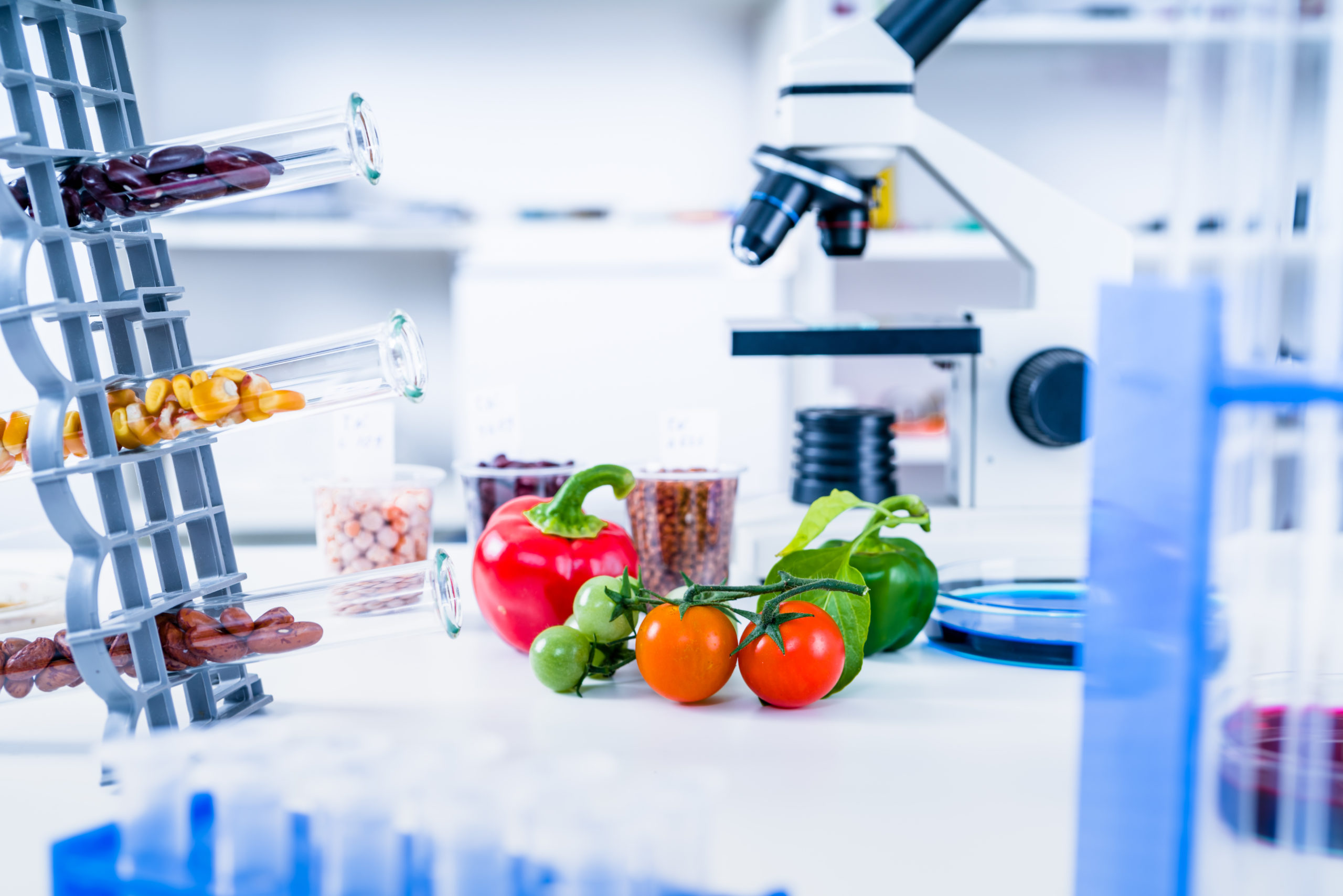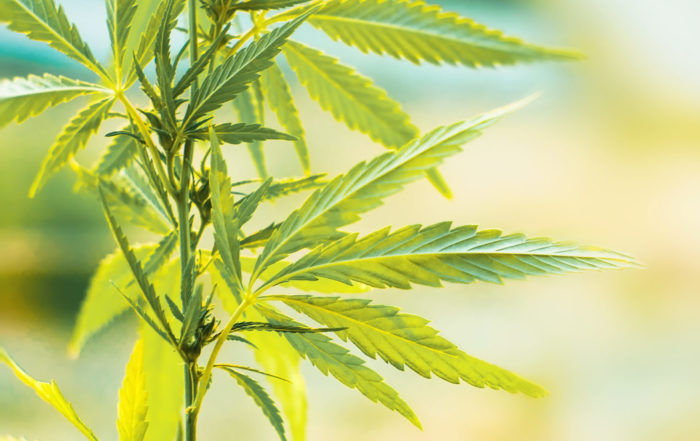
The Approaching Bioengineered Food Disclosure Deadline: Enforcement and Litigation Landscape After January 1, 2022
By Sam Jockel and Rachel Lowe
On July 29, 2016, President Obama signed into law the National Bioengineered Food Disclosure Standard (NBFDS), requiring the Secretary of Agriculture to establish a national standard for disclosing the presence of bioengineered foods.[1] Immediately, the law preempted states and localities from establishing requirements related to both (1) bioengineered food disclosures that are not identical to the mandatory disclosure requirement under the NBFDS established by the Secretary of Agriculture[2]; and (2) labeling involving genetically engineered food.[3] The NBFDS halted Vermont’s first-of-its-kind genetic engineering law and other similar state legislative efforts related to the labeling of genetically engineered foods.[4]
On December 21, 2018, the U.S. Department of Agriculture’s (USDA) Agricultural Marketing Service (AMS) published its final rule implementing the NBFDS. Ultimately, for the first time on the federal level, the NBFDS will require manufacturers, importers, and certain retailers to disclose the presence of bioengineered food or food that contains bioengineered food ingredients on products labeled for U.S. retail sale. While regulated entities are able to voluntarily comply with the NBFDS through December 31, 2021, barring the issuance of an enforcement discretion policy from AMS, all foods entering commerce after January 1, 2022 must be labeled in compliance with the NBFDS regulations.[5] We first provide a brief primer on the NBFDS, followed by an analysis of the enforcement and anticipated litigation landscape after January 1, 2022.
National Bioengineered Food Disclosure Standard: Key Concepts for Compliance
Though many consumers are accustomed to using the term “GMO,” the concept of specifically defined “bioengineered foods” or “BE foods” in regulatory parlance is here to stay because the NBFDS regulations track the NBFDS law’s use of the term “bioengineered.” The NBFDS tells us what bioengineered foods are and what foods must bear a bioengineered disclosure by January 1, 2022.
Determining What Is Bioengineered Food
To determine whether foods labeled for U.S. retail sale require mandatory bioengineered food disclosure, as a threshold matter, regulated entities must first understand whether a food is bioengineered under the NBFDS. The mandatory bioengineered food disclosure requirement applies to both human food subject to the labeling requirements under the Federal Food, Drug, and Cosmetic Act and some meat and egg-containing products under the jurisdiction of the USDA’s Food Safety and Inspection Service.[6] AMS’s regulations define “bioengineered food,” in part, as “a food that contains genetic material that has been modified through in vitro recombinant deoxyribonucleic acid (rDNA) techniques and for which the modification could not otherwise be obtained through conventional breeding or found in nature.”[7] Excluded from the definition of bioengineered food, and therefore outside the scope of the NBFDS, are incidental additives and food that “does not contain modified genetic material if the genetic material is not detectable pursuant to [specific standards].”[8] To that end, AMS has released two guidance documents concerning validation and testing for entities wishing to confirm whether a food or ingredient does not contain detectable modified genetic material.[9]
To aid regulated entities considering whether they need to make a bioengineered food disclosure, AMS has developed a List of Bioengineered Foods.[10] If a regulated entity uses a food or an ingredient produced from food that is on the List of Bioengineered Foods, its records, such as supplier documentation of the bioengineered food status of an ingredient, will determine whether the food must bear a bioengineered food disclosure.[11] While AMS published a request for comments on its recommendations to update the List of Bioengineered Foods that would add bioengineered sugarcane (insect-resistant) to the list and the modifier “(virus resistant)” to the existing listing for summer squash, as of this writing, AMS has not issued a final update to the list.[12] The list is not exhaustive, so entities would still be required to disclose bioengineered foods if they have actual knowledge that the food is bioengineered.
Recall the NBFDS’s definition of “bioengineered food”—even if a food is on the List of Bioengineered Foods, such as sugar beets, disclosure is not necessary if a processed or refined food derived from the bioengineered ingredient does not contain any detectable modified genetic material that could be considered bioengineered.[13] AMS has explained that, practically speaking, refined beet and cane sugar are unlikely to require bioengineered food disclosure because the processing has eliminated the detectable genetic material in the raw commodity.[14] Ultimately, however, it is up to regulated entities to ensure that adequate records demonstrate that modified genetic material is in fact not detectable in the food or ingredient.[15]
Finally, there are express exemptions to the disclosure requirement in the regulations, including: (1) food served in a restaurant or similar retail food establishment; (2) very small food manufacturers; (3) a threshold for inadvertent or technically unavoidable presence of bioengineered substances of up to 5% for each ingredient; and (4) food certified under AMS’s National Organic Program.[16] Also, under the NBFDS, food derived from an animal cannot be considered a bioengineered food solely because the animal consumed feed produced from, containing, or consisting of a bioengineered substance.[17]
Disclosure Options and Considerations
Once a determination is made that a food is bioengineered and requires labeling under the NBFDS, those responsible for disclosure—food manufacturers, importers where food is packaged before receipt by a retailer, and those retailers that package or sell food in bulk—can choose between one of four options to disclose the presence of bioengineered food (text, symbol, electronic/digital link, or text message), each with its own specific requirements.[18] The electronic/digital link option (e.g., a QR code) has been of particular interest and was the subject of many public comments on the NBFDS final rule. Unlike the text or symbol disclosure options, the bioengineered disclosure will not be immediately consumer-facing on the label. Under the electronic/digital link option, consumers must first access the electronic/digital link (e.g., scanning a QR code printed on the product label using a smartphone) before viewing the bioengineered food disclosure.[19]
As for the appearance of the disclosure, the NBFDS regulations require that the disclosure be of “sufficient size and clarity to appear prominently and conspicuously on the label, making it likely to be read and understood by the consumer under ordinary shopping conditions.”[20] The NBFDS regulations also allow for flexibility of placement of the NBFDS disclosure on the food product’s label, either on: (1) the information panel directly adjacent to the statement identifying the name and location of the handler, distributor, packer, manufacturer, importer, or any statement disclosing similar information; (2) the principal display panel; or (3) an alternate panel if there is insufficient space to place the disclosure on the information panel or the principal display panel.[21]
The NBFDS regulations also allow entities to voluntarily disclose the presence of bioengineered foods, including for certain foods that do not meet the definition of “bioengineered food” but are “derived from” bioengineered crops or food on the List of Bioengineered Foods.[22]
Recordkeeping
The key to compliance under the NBFDS is the maintenance of records. Manufacturers must maintain records for at least two years beyond the date the food or food product is sold or distributed for retail sale.[23] Specifically, the regulations require that records must be kept if an entity’s food or ingredient is on the List of Bioengineered Foods and/or the entity has actual knowledge that the food is bioengineered even if that food or ingredient is not on or produced from a food or crop on the List of Bioengineered Foods.[24] Again, the onus is on the regulated entity to determine, based on its records, whether the food must bear a bioengineered food disclosure. The regulations provide examples of the types of records that can be used (e.g., supply chain records, bills of lading, invoices),[25] but as indicated in the preamble to the final rule, regulated entities are free to determine for themselves which of their customary business records will demonstrate compliance and should be maintained.[26]
Regulatory Enforcement Landscape
USDA’s enforcement authority over regulated entities’ failures to disclose bioengineered foods is limited. The NBFDS is a marketing standard and not related to health or safety.[27] USDA lacks the authority to recall products, seize products, or issue monetary damages for a prohibited act under the NBFDS, which is defined as a failure to make a bioengineered food disclosure as required.[28] USDA’s sole enforcement authority is limited to investigations and making public the summary of the results of an audit or the summary of the final results of an investigation at the conclusion of the hearing for a noncompliant entity.[29]
We expect the filing of written complaints by competitors and consumer groups to drive AMS’s investigations of potential NBFDS violations. The NBFDS regulations allow any interested person with information about a possible violation to file a written statement or complaint with the administrator of AMS.[30] Should AMS determine that further grounds exist to investigate a complaint, its investigations will include auditing an entity’s records, which again highlights why implementing a recordkeeping system for compliance with the NBFDS is key.[31] Ultimately, interested parties should closely monitor AMS’s publication of summary audit results for trends in enforcement following the mandatory compliance date.
It is possible that individual states may adopt their own NBFDS law with identical requirements and remedies additional to those imposed by the federal rule. While the NBFDS lacks a private right of action, it expressly does not preempt states from adopting identical bioengineered food disclosure requirements that impose remedies for violations of their standards that go beyond the enforcement tools provided by USDA, such as injunctive relief or monetary damages. As of this writing, no state has adopted an identical bioengineered food disclosure standard. And the NBFDS does not preempt any remedy created by a state or federal statutory or common-law right.[32] Not surprisingly, however, the NBFDS law preempts nonidentical state requirements “relating to the labeling or disclosure of whether a food is bioengineered” and also preempts states from establishing laws concerning genetically engineered food ingredients.[33]
Litigation Landscape
Given USDA’s limited regulatory enforcement authority, potential litigation risk—from both consumers and competitors—is likely to drive NBFDS compliance.
The NBFDS has already been raised defensively by litigants in false advertising cases involving “non-GMO” or “natural” claims on food product labels.[34] At least one court has concluded that a suit challenging a “non-GMO” label was not preempted by the NBFDS.[35] A different court dismissed a suit challenging a “natural” labeling claim on a peanut butter product that contained sugar where the plaintiff claimed sugar beets are allegedly ubiquitous and likely to be genetically engineered. Citing the NBFDS, the court concluded that the label would not plausibly mislead the reasonable consumer and that California’s statutory safe harbor was satisfied because the “[agency] has determined that sugar derived from GMO sugar beets does not have to be disclosed on labels, as it is discretionary. See 7 C.F.R. § 66.116(b); 7 C.F.R. § 66.6. Because Defendant has complied with [agency] labeling regulations, it cannot be prohibited from using the term ‘natural’—nor can it be liable as a matter of law for failing to inform consumers that the item they purchased was potentially derived from GMO beets.”[36]
Products containing ingredients on or produced from a food on the List of Bioengineered Foods with labels that include absence claims (e.g., “non-GMO”) or “natural” claims may face scrutiny moving forward. Regulated entities should also expect plaintiffs’ attorneys to target products with labels that allegedly fail to disclose the presence of bioengineered food despite being required to, or do not disclose in accordance with the requirements under the NBFDS through state consumer protection statutes, though various defenses may apply to such claims.[37] And, competitors may also seek to use the Lanham Act or the Better Business Bureau’s National Advertising Division as a means of challenging each other’s marketing claims in this space.
Legal Challenge to Final Rule
Over nineteen months after the NBFDS final rule was published, a coalition of nonprofit organizations and food retailers filed a lawsuit against USDA, Secretary of USDA, and administrator of AMS in the U.S. District Court for the Northern District of California challenging key aspects of the NBFDS final rule for allegedly failing to abide by the NBFDS law passed by Congress and the Administrative Procedure Act (APA).[38] The plaintiffs allege that the rulemaking is a significant departure from the NBFDS Act and a violation of the APA on the basis that (1) AMS’s decision to greenlight QR codes allegedly “inaccessible” by some was arbitrary and capricious and contrary to the NBFDS law[39]; (2) USDA’s exclusion of the terms “GE” and “GMO” in the standard was arbitrary and capricious, contrary to the NBFDS law, and confusing to consumers; (3) the exclusion of highly refined foods was arbitrary and capricious and contrary to the NBFDS law; and (4) USDA’s restriction on the use of industry’s “right” to label foods produced through “genetic engineering” or as “genetically engineered” prohibits commercial speech in violation of the First Amendment.
USDA responded to the prolix, 401-paragraph complaint by denying that the plaintiffs were entitled to any relief and asserting that the agency complied with all applicable laws. In response to challenges (1), (2), and (4) above, each of which goes to the appearance of the bioengineered food disclosure, likely at summary judgment, we expect the NBFDS law and USDA’s rulemaking process to provide strong support for USDA’s decisions to retain the electronic/digital link disclosure as a separate disclosure option, as well as its decision to only make use of the term “bioengineered food” under the mandatory disclosure requirement. Of all the challenges, challenge (3) above, the treatment of highly refined foods, could potentially have the most consequence because it goes to the heart of which foods are considered bioengineered and require mandatory disclosure under the NBFDS. As an indication of the lawsuit’s importance, three industry associations have already moved to intervene in the case.
As of yet, there are no public indications that USDA has changed its positions on the rulemaking in light of the new administration. Interested stakeholders should monitor the litigation to see what, if any, positions are taken by the agency and whether the litigation is stayed. The U.S. Environmental Protection Agency, for example, recently requested that the Department of Justice seek stays in all pending litigation pertaining to regulations issued under the former administration.
Conclusions
In a statement announcing the release of the final NBFDS rulemaking, former U.S. Secretary of Agriculture Sonny Perdue stated that the NBFDS “ensures clear information and labeling consistency for consumers about the ingredients in their food.”[40] AMS had received over 14,000 comments to the proposed NBFDS rule, however, reflecting divergent views within industry and consumer groups on the NBFDS’s disclosure requirements. Assuming the NBFDS regulations survive the current legal challenge and compliance remains mandatory by January 1, 2022, it is up to manufacturers, importers, and retailers to develop a compliance strategy that takes into account both the flexibilities provided under the NBFDS and the potential enforcement and litigation risk that lies ahead.
[1] 7 U.S.C. 1639b(a).
[2] 7 U.S.C. 1639b(e).
[3] 7 U.S.C. 1639i(b).
[4] Because the National Bioengineered Food Disclosure Standard was passed into law around the same time as the Vermont law’s compliance deadline, it was not enforced. See Office of the Vermont Attorney General, GE Labeling Rule (“Following President Obama’s signing of S.764, which establishes a ‘National Bioengineered Food Disclosure Standard,’ the Vermont Attorney General will no longer be enforcing Act 120, Vermont’s first-in-the-nation law requiring the labeling of food produced with genetic engineering (GE)”), https://ago.vermont.gov/ge-food-labeling-rule/.
[5] AMS’s FAQs specifically state, “The mandatory compliance date is January 1, 2022. Foods entering commerce after this date must be labeled in compliance with the Standard,” https://www.ams.usda.gov/rules-regulations/be/faq/compliance-and-enforcement.
[6] 7 U.S.C. §§1639, 1639a.
[7] 7 CFR § 66.1.
[8] Id.
[9] National Bioengineered Food Disclosure Standard Guidance to Ensure Acceptable Validation of a Refining Process, https://www.ams.usda.gov/sites/default/files/media/NBFDS_ValidationGuidance.pdf. National Bioengineered Food Disclosure Standard Guidance on Testing Methods, https://www.ams.usda.gov/sites/default/files/media/NBFDS_testingMethodology.pdf.
[10] 7 C.F.R. § 66.6. The List of Bioengineered Foods currently consists of the following: Alfalfa, apple (ArcticTM varieties), canola, corn, cotton, eggplant (BARI Bt Begun varieties), papaya (ringspot virus-resistant varieties), pineapple (pink flesh varieties), potato, salmon (AquAdvantage®), soybean, squash (summer), and sugarbeet.
[11] See, e.g., 7 C.F.R. § 66.102(a) (“If a food (including any ingredient produced from such food) is on the List of Bioengineered Foods, and records maintained by a regulated entity demonstrate that the food is bioengineered. . .”).
[12] 85 Fed. Reg. 44,791 (July 24, 2020).
[13] 7 C.F.R. § 66.9; 83 Fed. Reg. 65,814, 65,833.
[14] 83 Fed. Reg. 65,814, 65,834; Forsher v. J.M. Smucker Co., No. 5:19CV00194, 2020 U.S. Dist. LEXIS 55835, at *3–4 (N.D. Ohio Mar. 31, 2020) (citing same).
[15] 7 C.F.R. § 66.9.
[16] 7 C.F.R. § 66.5.
[17] 7 U.S.C. § 1639.
[18] 7 C.F.R. §§ 66.102; 66.104; 66.106; 66.108.
[19] 7 C.F.R. § 66.106(b).
[20] 7 C.F.R. § 66.100(c).
[21] 7 C.F.R. § 66.100(d).
[22] 7 C.F.R. § 66.116. Under the “derived” voluntary disclosure option, for foods that do not meet the definition of bioengineered food (i.e., that do not contain modified genetic material), to qualify for voluntary disclosure, the food cannot be an incidental additive, nor can it qualify for the other exemptions under 7 C.F.R. § 66.5. Further, if a food is on the List, entities that are otherwise exempt from the requirements of the NBFDS (e.g., very small food manufacturers and restaurants and similar retail food establishments) can also voluntarily disclose.
[23] 7 C.F.R. § 66.302.
[24] 7 C.F.R. § 66.109.
[25] 7 C.F.R. § 66.302(a)(4).
[26] 83 Fed. Reg. 65,834 (Dec. 21, 2018).
[27] 83 Fed. Reg. 65,848 (Dec. 21, 2018).
[28] 7 C.F.R. § 66.400.
[29] 7 C.F.R. § 66.406.
[30] 7 C.F.R. § 66.402(a).
[31] See 7 C.F.R. § 66.402.
[32] 7 U.S.C. § 1639j.
[33] 7 U.S.C. § 1639b(e); 7 U.S.C. § 1639i(b).
[34] See, e.g., In re KIND LLC “Healthy & All Nat.” Litig., 287 F. Supp. 3d 457, 460 (S.D.N.Y. 2018); Holve v. McCormick & Co., 334 F. Supp. 3d 535, 555 (W.D.N.Y. 2018).
[35] In re KIND LLC “Healthy & All Nat.” Litig., 287 F. Supp. 3d 457, 464 (S.D.N.Y. 2018).
[36] Forsher v. J.M. Smucker Co., 2020 U.S. Dist. LEXIS 55835, *32–33 (N.D. Ohio March 31, 2020).
[37] Absence claims on certified organic foods are contemplated by the law, too: “In the case of a food certified under the national organic program established under the Organic Foods Production Act of 1990 (7 U.S.C. 6501 et seq.), the certification shall be considered sufficient to make a claim regarding the absence of bioengineering in the food, such as ‘not bioengineered’, ‘non-GMO’, or another similar claim.” 7 U.S.C. § 6524.
[38] Natural Grocers, et al. v. Sonny Perdue, Secretary of USDA, et al., No. 3:20-cv-05151 (N.D. Cal. Jul. 27, 2020).
[39] Plaintiffs challenge several aspects of USDA’s decision to permit the electronic/digital link disclosure to appear on a package without any other bioengineered food disclosure. They argue, among other things, that the electronic disclosure should have been combined with “additional” means of disclosure on the same label.
[40] USDA Press Release, Establishing the National Bioengineered Food Disclosure Standard, https://www.usda.gov/media/press-releases/2018/12/20/establishing-national-bioengineered-food-disclosure-standard.
Update Magazine
Spring 2021

 SAM JOCKEL is a senior associate in Alston & Bird’s Litigation & Trial Practice Group. Sam focuses his practice on regulatory, policy, and litigation matters involving food, beverages, cosmetics, dietary supplements, and drugs.
SAM JOCKEL is a senior associate in Alston & Bird’s Litigation & Trial Practice Group. Sam focuses his practice on regulatory, policy, and litigation matters involving food, beverages, cosmetics, dietary supplements, and drugs. RACHEL LOWE is a partner in Alston & Bird’s Los Angeles office. She is a litigator who routinely defends clients in the food and beverage, retail, and telecom industries facing false advertising and privacy class action suits.
RACHEL LOWE is a partner in Alston & Bird’s Los Angeles office. She is a litigator who routinely defends clients in the food and beverage, retail, and telecom industries facing false advertising and privacy class action suits.





